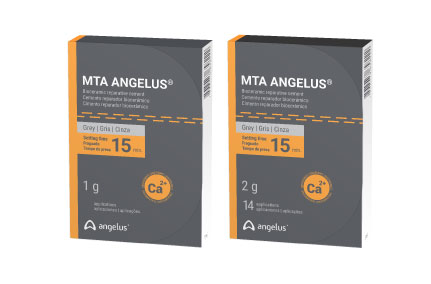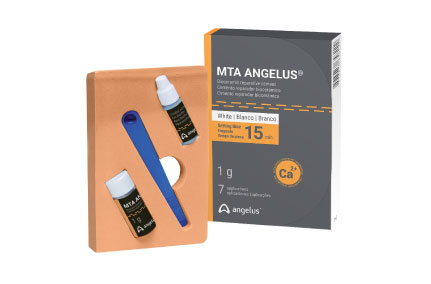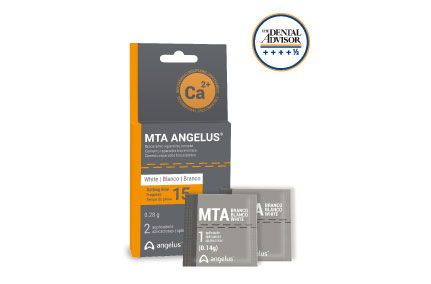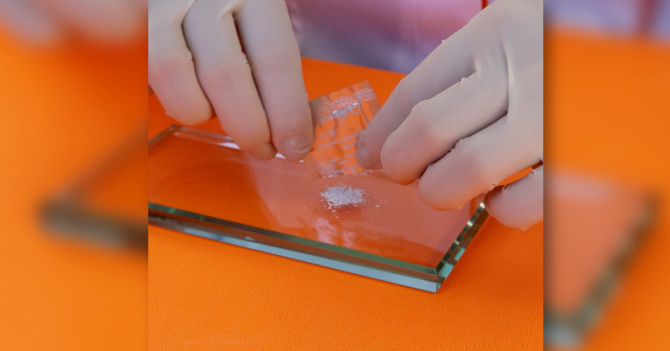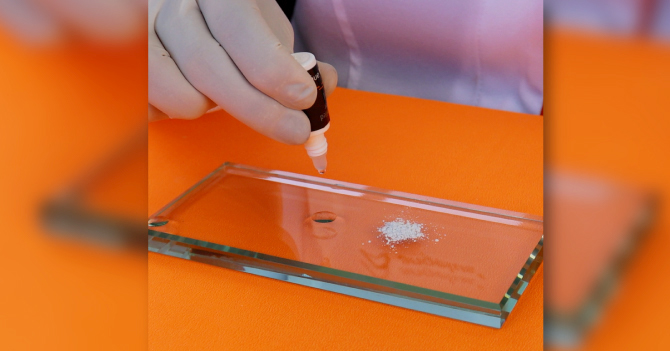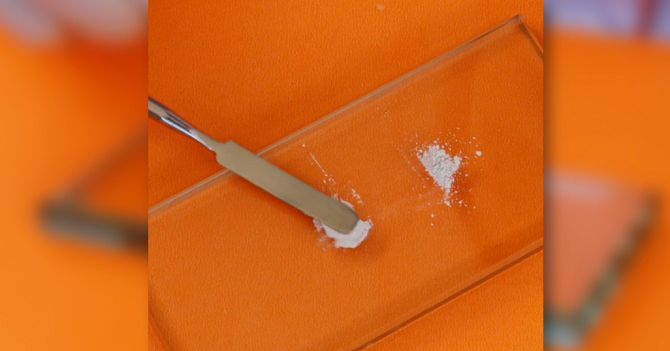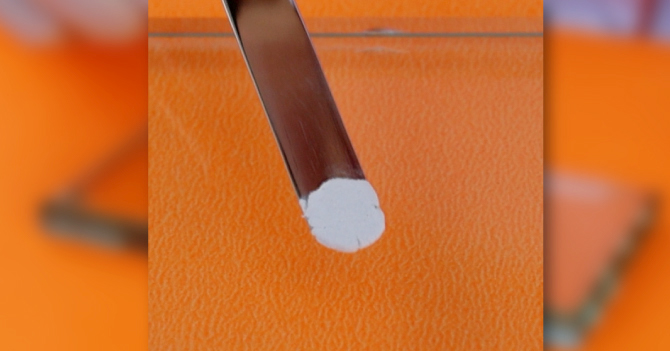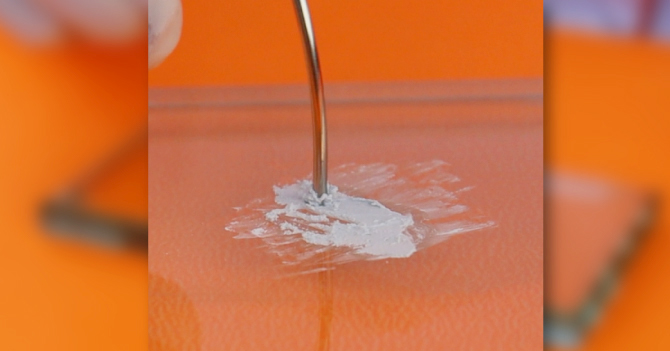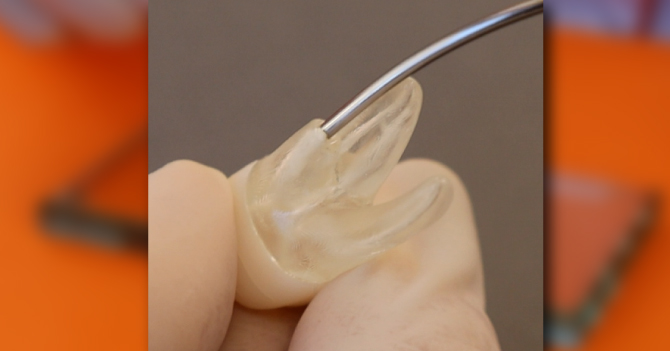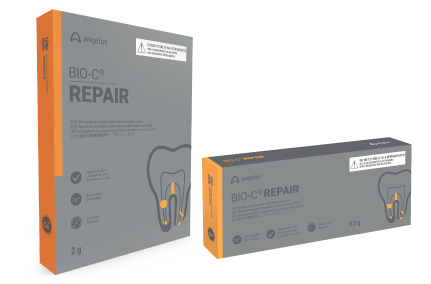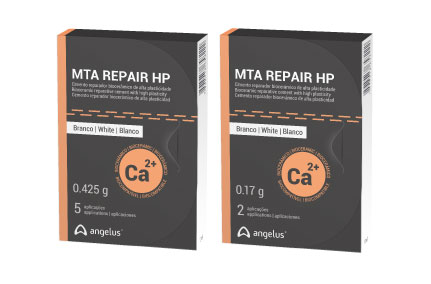
MTA ANGELUS ®
Eficiência comprovada no tratamento de perfuraçõesDescrição
Cimento Reparador Biocerâmico.
Indicação
Tratamento de perfuração radicular (canal e furca) iatrogênica ou por lesão de cárie;
Tratamento via canal/cirúrgico de perfuração radicular por reabsorção interna;
Cirurgia parendodôntica com retrobturação;
Proteção pulpar direta;
Pulpotomia;
Apicigênese;
Apicificação.
Características e Benefícios
Liberação de íons Cálcio
Auxilia na rápida recuperação óssea e formação do cemento
Indução de neoformação de cemento perirradicular
Vedamento biológico
Hidrofílico
Permite utilização em ambiente úmido sem perda de propriedades
Alta alcalinidade
Propriedades antibacterianas
Baixa solubilidade
Impede infiltração marginal
Óxido de Cálcio
Promove a biocompatibilidade tecidual
Agregado de óxidos
Boa resistência à compressão
Alta radiopacidade
Excelente identificação radiográfica
Tempo de Presa de 15 minutos
Tempo de presa final reduzido comparado aos similares
Apresentação
Ref. 820 - Embalagem com 1 g de MTA Angelus Cinza, 3ml de água destilada e 1 dosador de pó
Ref. 821 - Embalagem com 2g de MTA Angelus Cinza, 3ml de água destilada e 1 dosador de pó
Ref. 822 - Embalagem com 1 g de MTA Angelus Branco, 3ml de água destilada e 1 dosador de pó
Ref. 824 - Embalagem com 0,14g: 2 doses de 0.14 g cada de MTA Angelus Branco e 3ml de água destilada
Materiais informativos
Perguntas Frequentes
Químicas:
- Liberação de íons Ca: permite formação de tecido de remineralização
- Altamente alcalino: inóspito para crescimento bacteriano
Físicas:
- Baixa solubilidade: pode ser utilizado diretamente sobre a polpa e tecidos periapicais
- Resistência à compressão: 44,2 MPa: pode ser utilizado como material de base
- Expansão por hidratação: produz o completo vedamento das cavidades
- Tempo de presa: 15 minutos, pode ser utilizado em sessão única
Radiopaco: permite controle radiográfico posterior (proservação)
Biológicas:
- Biocompatibilidade: pode ser utilizado diretamente sobre os tecidos vivos
Neoformação de cemento: único material odontológico com essa propriedade
Remineralização de dentina: formação de barreira biológica
Vedamento biológico de perfurações: completa cura dos tecidos perirradiculares
A diferença está na redução de concentração de um dos componentes do MTA-Angelus, o óxido de ferro, que é responsável pela cor cinza do produto. Essa redução não interfere em nenhuma das propriedades do MTA.
Tratamento de perfurações radiculares e de furca;
Selador de reabsorções internas e internas comunicantes;
Retrobturador em cirurgias parendodônticas;
Capeador pulpar em tratamentos conservadores da polpa;
Indutor de apexificação e apexigênese;
Material para barreira intracoronária prévia ao clareamento dental;
Plug apical.
O MTA é um material de consistência diferente dos materiais odontológicos convencionais. Sua aplicação pode ser realizada com instrumentos próprios de uso (Aplicador de MTA).
A Angelus, desde 2002, alterou o tempo de presa do MTA que era de 2 horas e meia, reduzindo-o para 15 minutos. Essa redução do tempo de presa é exclusiva da Angelus.
Foi realizada a diminuição da concentração do Sulfato de Cálcio, que deixa a presa do produto muito longa.
O MTA da Angelus permite a realização do tratamento restaurador na mesma sessão clínica da inserção do MTA Angelus. Nunca deve ser utilizado com brocas Lêntulo, pois precisa ser inserido diretamente no lugar a ser reparado.
O MTA não tem consistência (escoamento) adequada para obturação de canais radiculares. Também, após sua presa, sua remoção seria extremamente difícil, caso houvesse a necessidade de um retratamento.
Onde comprar?
Consulte a disponibilidade dos nossos produtos em seu país.
